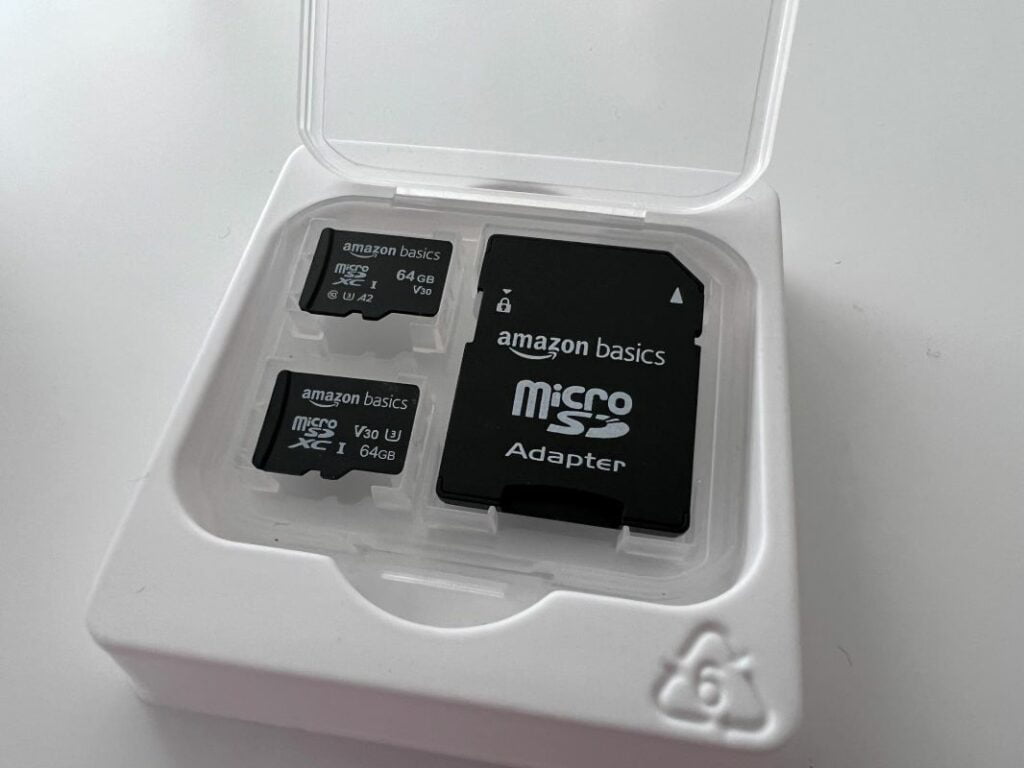This RISC-V-based StarFive board has been out for a couple of months now after its Kickstarter campaign and if you were wondering how its microSD card slot performs, I bring you good news. Let’s check out what I consider to be the best microSD card for the VisionFive 2!
Disclaimer: This post contains Amazon Affiliate links and I may receive a commission if you click on any of those and make a qualifying purchase. This does not influence my opinion of the brands involved!
Table of Contents
VisionFive 2 microSD Benchmarks
The table below shows the results of 5 different benchmarks that were executed 5 times each. The numbers shown are the average of those benchmark runs. The exception here is that ioping was run with the -c 250 option so it ran 250 checks, and the average latency is what you see here. I also have a mega-post of all of my microSD benchmarks for Single Board Computers if that interests you!
The Fastest microSD Cards for the VisionFive 2
The StarFive VisionFive 2 offers microSD performance on par with the Raspberry Pi 3 for the most part. Which whilst not terrible, isn’t going to set the world on fire. How important is the microSD card performance for your use case? Let me know in the comments what you’re planning to do with your RISC-V SBC! I’ve chosen to include the performance classes/specifications for each card too, so you can get an idea of what’s to be expected and if you’re wondering what these mean, the SD Association have you covered.
Sequential Read Speeds
The Amazon Basics 64GB microSD card takes the top spot in our first test, reaching 21.36 MB/s across the benchmark runs, though the Intenso 64GB SD card was only 0.03 MB/s behind it, which is within a margin of error. To be brutally honest though, they’re all within around 1 MB/s of each other (with the Kingston drive being an outlier) so there’s not much in it here.
| App Performance Class | Speed Class | Video Speed Class | UHS Speed Class |
|---|---|---|---|
| A2 | Class 10 | V30 | U3 |
Sequential Write Speeds
Again, the Amazon Basics 64GB is at the top but this time it’s only by 0.01 MB/s at 20.28 MB/s. with the Intenso (64GB) option matching it again. The Intenso microSD card is also manufactured by Longsys and they share identical ratings
| App Performance Class | Speed Class | Video Speed Class | UHS Speed Class |
|---|---|---|---|
| A2 | Class 10 | V30 | U3 |
Random Read Speeds
Are you getting bored of me repeating the same card(s) over and over? Probably. The fact of the matter, though, is that the Intenso 64GB microSD card is up there again with an 8.21 MB/s average! 2nd place goes to the Amazon Basics 64GB card with 8.09 MB/s.
| App Performance Class | Speed Class | Video Speed Class | UHS Speed Class |
|---|---|---|---|
| A2 | Class 10 | V30 | U1 |
Random Write Speeds
Bucking the trend of previous boards, the KIOXIA EXCERIA (32GB) offering is down in 4th place in the VisionFive 2, and well, the Amazon Basics 64GB option is on top again with 3.78 MB/s.
| App Performance Class | Speed Class | Video Speed Class | UHS Speed Class |
|---|---|---|---|
| A2 | Class 10 | V30 | U3 |
Best microSD Card for the VisionFive 2
I think this may be the first time that I’ve decided against choosing a clear winner. Whilst the Amazon option did take the top spot in 3 of the 4 throughput tests, it was within a margin of error (as a reminder, I perform all tests 5 times on each card and the value you see above is the average), and not quite as clear-cut as others have been in the past.
So on that note, I’ll be giving the “Best microSD Card for the VisionFive 2” title here to both the Amazon Basics and Intenso microSD cards. They’re both manufactured by Longsys and have the same performance classes and they’re likely identical cards with different branding on them, though that’s not something I’m able to confirm so don’t let my speculation cloud your judgment.
Ultimately, you’ll want to make a decision based on what brand you’re more trusting of and the price at the time of ordering. At the time of writing, however, I’m seeing that the Integral listings on Amazon don’t seem to be showing the card that I have and are instead showing a U1 class drive. I’m not sure if they’ve stopped selling the one I’m testing with as it’s most definitely an A2/U3-rated card! In light of that, the Amazon Basics 2 pack may be a wiser choice as it’s taken the top spot on nearly every single test I’ve performed so far and has been incredibly consistent in terms of the delivered product.

Related Post: Best microSD Cards for the Radxa ROCK 5B